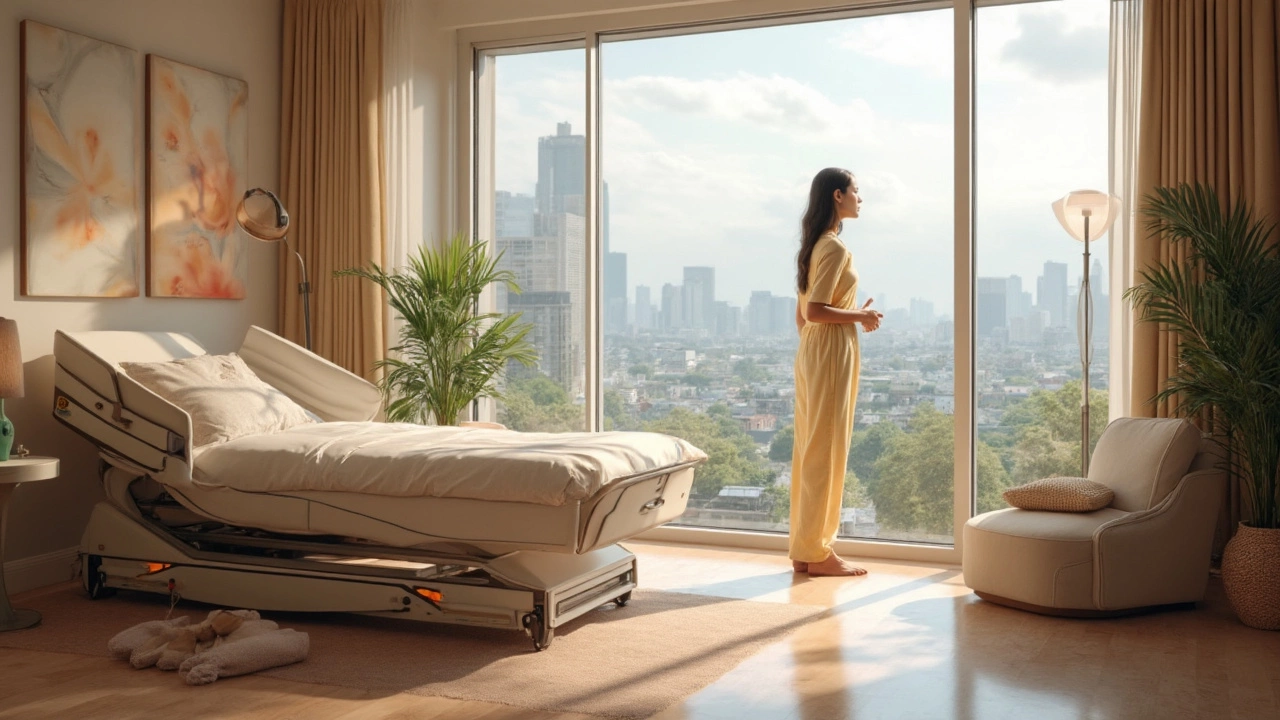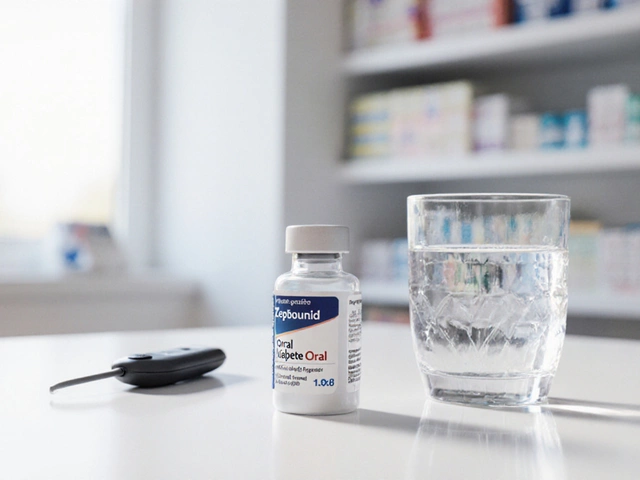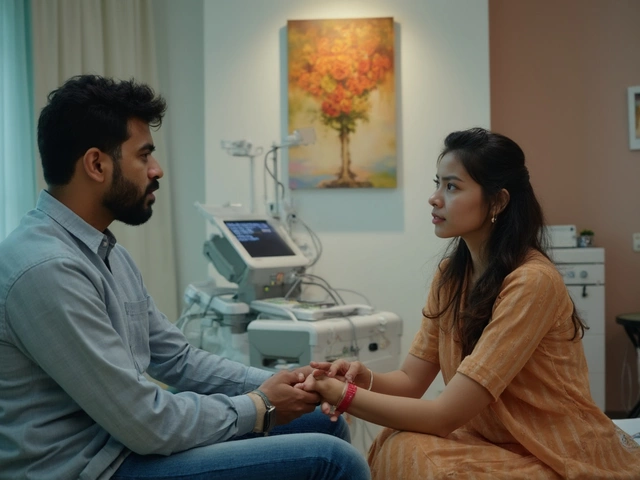Ever wished your hospital visit felt more like checking into a luxury hotel than bracing for a sleepless night under harsh fluorescent lights? Some hospitals in the U.S. don’t just meet medical needs—they totally flip the script on what a hospital should look and feel like.
This conversation comes up all the time, especially with folks considering medical tourism. If you’re going to travel for care, why not pick a place with lush gardens, light-filled atriums, and rooms that would put many resorts to shame? It’s not just about bragging rights for your Instagram, either. There’s growing proof that pretty hospitals can actually help people heal faster and feel less stressed—patients and worried families both win.
So, what does the prettiest hospital in the U.S. look like? Think giant windows with mountain or ocean views, art everywhere (not those cheesy posters), courtyards packed with native flowers, and spaces that encourage you to breathe easier. And wait, there’s more—it’s all backed by serious thinking about how the environment affects your mood and recovery. You might even want to stay longer, even if your dog is waiting at home. Curious? Let’s break down what really makes a hospital the kind of place people talk about long after they’re discharged.
- What Makes a Hospital 'Pretty'?
- America’s Most Beautiful Hospital: A Closer Look
- Does Beauty Actually Improve Recovery?
- Travel Tips for Medical Tourists
What Makes a Hospital 'Pretty'?
When people talk about the prettiest hospital in the US, they don’t just mean a place with shiny floors and a new paint job. They’re looking for something that feels friendly, calming, and a bit like a high-end hotel. This isn’t just about showing off; it’s about real design features that help patients, visitors, and staff all feel more at ease.
Top hospitals now bring in architects who know how sunlight, color, and greenery can change the vibe instantly. Research out of Johns Hopkins showed that patients in rooms with big windows and natural views asked for less pain medication and had shorter stays. Bright, open spaces make things less scary. Instead of being trapped in a maze of noisy hallways, you’re met with quiet courtyards and chill-out lounges. Art matters too—some places bring in local artists to decorate with murals that actually feel inspiring instead of cold and corporate.
Take a look at what usually sets a “pretty” hospital apart:
- Huge windows with views of nature (not just parking lots)
- Comfortable seating for patients and visitors everywhere you turn
- Modern, easy-to-navigate layouts that cut down stress (no endless hallways!)
- Lots of plants and gardens—sometimes right in the lobby or rooftop
- Art and color that make the place feel less like a hospital
- Lighting designed for real-life comfort, not just saving electricity
And check this out—a lot of hospitals are investing serious cash in design and beauty. Here’s a quick look at how U.S. hospitals rate physical environment improvements as a priority:
| Feature | % of U.S. Hospitals Investing |
|---|---|
| Natural Light/Views | 74% |
| Easy Navigation/Signage | 63% |
| Indoor Greenery | 59% |
| Artwork | 52% |
None of this is just for show. Studies keep proving that a good-looking, well-designed hospital drops stress, keeps moods up, and can make the whole recovery process smoother. That’s why the prettiest hospital US is a hot topic, especially for folks who have a choice in where they get care—or even want to combine travel with treatment. When hospitals look and feel better, everyone wins.
America’s Most Beautiful Hospital: A Closer Look
If you search for the prettiest hospital in the US, it’s hard to ignore the buzz around AdventHealth Celebration in Florida. It keeps showing up at the top of rankings like Soliant’s list of America’s Most Beautiful Hospitals. People actually travel here for treatment, and not just because Florida is warm and sunny.
Let’s get specific. This place looks nothing like your usual hospital—when you walk in, you see a huge, sunlit atrium, indoor palm trees, and art that doesn’t remind you of a dentist’s waiting room. They say the whole idea is to feel more like a healing retreat than a clinical building. Check out these highlights that make it stand out:
- Light everywhere. Most patient rooms have massive windows. There’s a study posted by The Center for Health Design that found natural light helps patients recover faster and even need less pain medication.
- Gardens and walking paths right outside. You can spot people doing laps or just chilling in the shade. It’s a bonus for visitors and patients who want fresh air without leaving the property.
- Art everywhere. It’s not random prints—there are real murals, sculptures, and bright colors picked specifically to lower stress.
- Hotel-style touches. Private rooms, cozy lounges, even on-site guest suites so your family can stick around in comfort.
This hospital isn’t just about appearances. It actually scores high for patient satisfaction. Check out these figures below:
| Feature | AdventHealth Celebration | National Average |
|---|---|---|
| Patient Satisfaction (HCAHPS Score) | 87% | 72% |
| Private Patient Rooms (%) | 98% | 70% |
| Natural Light in Patient Rooms | Yes | Varies |
| Healing Gardens (acres) | 4 | 0–1 |
People flying in for care say the non-hospital vibe helps lower their anxiety—from check-in to discharge. Whether you’re choosing a prettiest hospital US just for the Instagram pictures or for the actual benefits, places like this prove nice design isn’t just about looks. It can make real life easier whether you’re a patient, visitor, or medical staff navigating a tough day.

Does Beauty Actually Improve Recovery?
Believe it or not, the way a hospital looks isn’t just something designers fuss over—it has real effects on how people feel and heal. This has gotten scientists, doctors, and architects talking for years. In fact, a classic study by environmental psychologist Roger Ulrich in 1984 showed that patients who had a view of trees recovered from surgery faster, needed less pain medication, and had fewer negative comments in their charts than patients who stared at a brick wall. That sparked a whole movement in hospital design.
Since then, dozens of studies have looked at how things like sunlight, art, green spaces, and even room colors impact recovery. Hospitals in the U.S. known for their design—such as the Mayo Clinic in Jacksonville or the Cleveland Clinic’s Florida campus—focus on these details. We’re talking big windows, calming gardens, and warm wood tones instead of cold tiles and plastic.
Check out some hard facts:
| Feature | Patient Benefit | Study/Source |
|---|---|---|
| Natural Light | Reduced pain medication by 22% | Choi et al., 2012 |
| Scenic Views | Shorter post-op stays by 1.5 days | Ulrich, 1984 |
| Healing Gardens | Lower self-reported stress by 44% | Marcus & Barnes, 1995 |
| Artwork | Decreased anxiety, improved moods | Staricoff et al., 2003 |
Why does all this matter for prettiest hospital US? Because a calming, pretty environment distracts from pain and anxiety, gets patients moving sooner, and makes families and staff less stressed. It’s not just window dressing—nice surroundings make a difference you can feel. If you’re weighing hospitals for a procedure, check out photos and virtual tours first. Read reviews about the vibe, not just the doctors. People notice when a place feels peaceful versus stressful.
Plus, if you’re coming from overseas or across the country, why not pick a spot that puts you at ease the minute you walk in? We all heal better when we feel comfortable and safe, and beautiful hospital design is a shortcut to getting there faster.
Travel Tips for Medical Tourists
Headed to the prettiest hospital in the US? Cool idea, but don’t just show up and hope for the best. Here’s what makes trips like these easier, smoother, and way less stressful—so you can actually focus on getting better instead of wrangling paperwork and flights.
- Book Early and Double-Check Paperwork: Always set your appointments at least a couple of months ahead, if you can. Some of these top-notch hospitals get booked fast, especially the really popular spots with a view. Have every document ready—medical history, test results, personal ID. Hospitals like Cleveland Clinic and Mayo Clinic actually have dedicated teams for incoming international patients, but they still expect you to be organized.
- Understand the Costs: American hospitals can come with sticker shock, even if the place looks like a resort. Get an itemized quote for treatment, hotel stays (if you need to extend), and ask about extra fees. Many hospitals are upfront about their pricing—it’s not weird to ask direct, detailed questions.
- Location, Location, Location: Check travel times from the nearest airport to the hospital. Prettier places (think Loma Linda University Medical Center in California or AdventHealth in Florida) aren’t always near big cities. Factor in transport options—Uber, hospital shuttles, or even hotel-arranged rides.
- Keep Friends and Family in the Loop: It's tempting to go solo, but having someone with you for support—especially if recovery takes a couple of days—can be a game-changer. Many hospitals offer discounted lodging for family, so ask about deals.
- Know the Hospital’s Visitor Policies: Some hospitals have strict limits on visitors, especially since COVID changed a lot of rules. Check visiting hours and any rules for overnight stays ahead of time.
- Pack Smart: If your view’s amazing, bring your camera or phone charger. But don’t forget comfort items, like flip-flops for the shower or your own pillow. Some hospitals are fancy, but a little prep makes life easier.
A lot of travelers believe the best hospitals hide in big cities, but look at the numbers below—many of the top-rated spots for medical tourism are in relaxed, suburban areas with easy access to nature.
| Hospital | Location | Distance from Airport | International Department |
|---|---|---|---|
| Mayo Clinic | Rochester, MN | 10 miles | Yes |
| Cleveland Clinic | Cleveland, OH | 13 miles | Yes |
| AdventHealth | Orlando, FL | 15 miles | Yes |
| Loma Linda Univ. Medical Center | Loma Linda, CA | 25 miles | Yes |
One last tip: Reach out to the hospital’s international patient office if you’re coming from outside the US. They usually help with language services, local SIM cards, and rides—small things, but they make a big difference when you’re tired or not feeling great.





